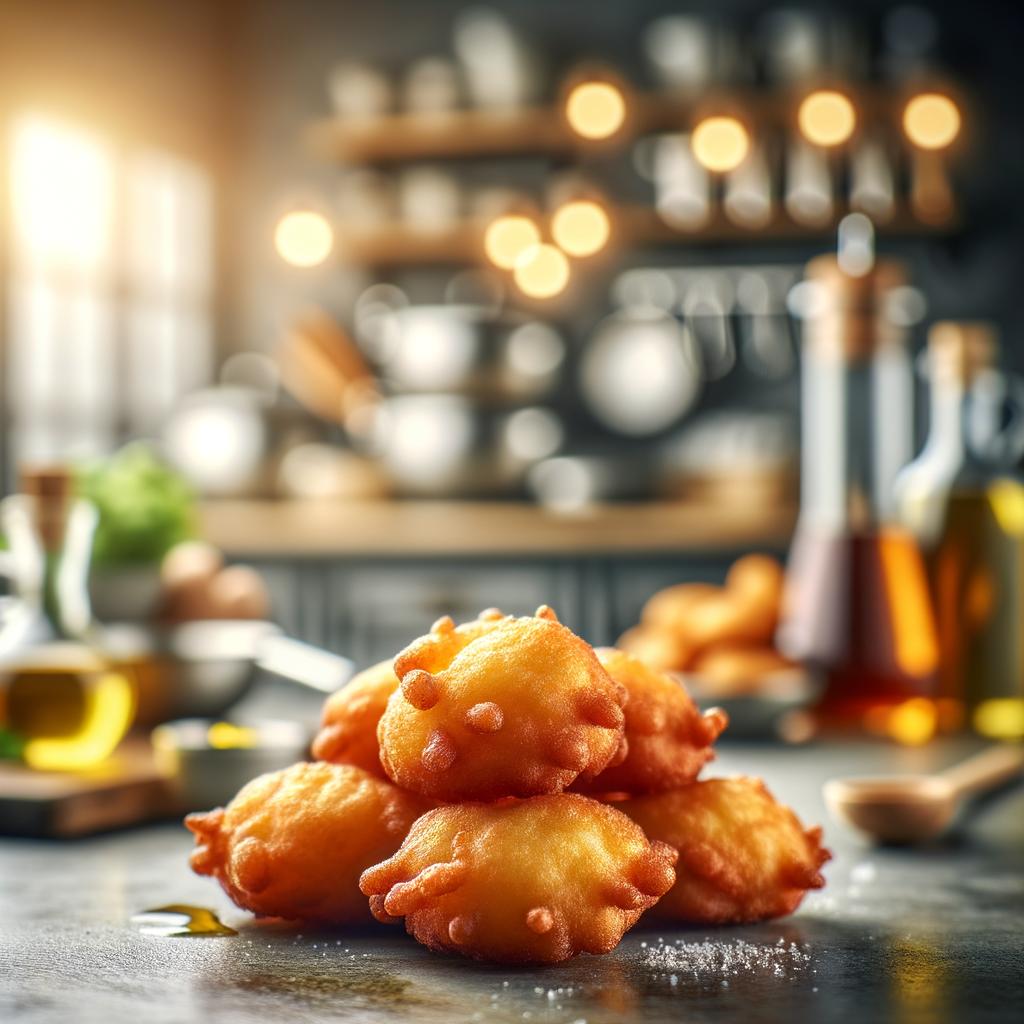Fried Dough Fritters

Description
Fried dough fritters, a simple yet tantalizing treat, are a delight to the senses. These golden-brown morsels of joy, often shaped into small disks or elongated rolls, are a tactile pleasure, with a slightly crisp exterior that gives way to a delightfully soft and fluffy interior. The flavor profile is a comforting blend of slightly sweet, yeasty breadiness, with a hint of saltiness, all enveloped in a pleasant, deep-fried savoriness. What sets fried dough fritters apart is their versatility - they can be sweet or savory, simple or filled with an array of ingredients, and are loved by cultures around the world.
Primary Uses
Fried dough fritters have a rich culinary history and are used in a myriad of dishes across the globe. In America, they are often served as sweet treats, dusted with powdered sugar or drizzled with honey, while in Asia, they are commonly enjoyed as a savory snack or side dish, often filled with meat or vegetables. In Europe, they are a staple at fairs and carnivals, often served with a dusting of powdered sugar or a dollop of jam. They also hold cultural significance, often being prepared for special occasions or religious celebrations.
History
The history of fried dough fritters is as rich and varied as their flavors. Their origin can be traced back to ancient civilizations, where they were likely a simple solution to quickly prepare sustenance. Over time, each culture added its unique spin, leading to the diverse range of fried dough fritters we see today. In China, for instance, fried dough fritters known as "Youtiao" are traditionally enjoyed in breakfast, symbolizing a historical event. In Spain, "Churros" are often served with a cup of thick hot chocolate, a tradition that dates back to the 16th century.
Nutritional Information
While fried dough fritters are undeniably delicious, they are a treat to be enjoyed in moderation due to their high caloric content, primarily from the oil in which they are fried. However, they do provide some nutritional benefits. They are a source of carbohydrates, providing energy, and if made with whole grain flour, can offer a dose of fiber. Some versions, especially those filled with meat or vegetables, can also provide protein. Compared to other fried foods, they are relatively simple, often made with just flour, water, yeast, and salt, making them a less processed option. However, as with all foods, balance and moderation are key.

